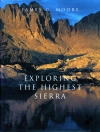Understanding of rivers and their sediments, both as modern systems
and as ancient counterparts in the geological record, has
progressed steadily but markedly over the past several decades,
with contributions by practitioners in diverse fields of
geosciences and engineering. This book contains 31 papers, with
authors from 13 countries, who participated in the Sixth
International Conference on Fluvial Sedimentology held in Cape
Town, South Africa, in 1977. True to the nature of these
quadrennial conferences, the papers in this book discuss a broad
range of fluvial subjects that include the character of bedforms
and sediment transport in river channels, morphological and
sedimentological features of modern fluvial environments, modern
and ancient avulsions, internal and external controls on the
behaviour of river systems, and the facies and architectural
organization of alluvial deposits.
* * A specialist volume detailing the latest advances in fluvial
sedimentology.
* Authorship includes the leaders in the field.
If you are a member of the International Association of
Sedimentologists, for purchasing details, please see:
http://www.iasnet.org/publications/details.asp?code=SP28
Jadual kandungan
1. Sediment Transport And Bedforms:.
Turbulent Sand Suspension Over Dunes.
Dune Growth, Decay And Migration Rates During A Large-Magnitude
Flood At A Sand And Mixed Sand-Gravel Bed In The Dutch Rhine River
System.
Bedforms In The Middle Reaches Of The Tay Estuary, Scotland.
Flow Structure And Transport Of Sand-Grade Suspended Sediment
Around An Evolving Braid Bar, Jamuna River, Bangladesh.
2. Modern Fluvial Environments:.
Effective Discharge For Overbank Sedimentation On An Embanked
Floodplain Along The River Rhine, The Netherlands.
RADARSAT Imaging Of The 1997 Czech Republic Flood.
The Role Of Overbank Flow In Governing The Form Of An
Anabranching River: The Fitzroy River, Northwestern Australia.
Downstream Changes In Floodplain Character On The Northern
Plains Of Arid Central Australia.
Confined Meandering River Eddy Accretions: Sedimentology,
Channel Geometry And Depositional Processes.
The Influence Of Flooding On The Erodability Of Cohesive
Sediments Along The Sabie River, South Africa.
Erosion Of Sediments Between Groynes In The Waal River Due To
Navigation Traffic.
The Geochemical And Mineralogical Record Of The Impact Of
Historical Mining Within Estuarine Sediments From The Upper Reaches
Of The Fal Estuary, Cornwall, UK.
3. Avulsion: Modern And Ancient:.
Causes Of Avulsion: An Overview.
Avulsion And Crevassing In The Sandy, Braided Niobrara River:
Complex Response To Base-Level Rise And Aggradation.
Contrasting Styles Of Holocene Avulsion, Texas Gulf Coastal
Plain USA.
Pemiscot Bayou, A Large Distributary Of The Mississippi River
And Possible Failed Avulsion.
Avulsion, River Metamorphosis, And Reworking By Underfit
Streams: A Modern Example From The Brahamputra River In Bangladesh
And A Possible Ancient Example In The Spanish Pyrenees.
Holocene Avulsion History Of The Lower Saskatchewan Fluvial
System, Cumberland Marshes, Saskatchewan-Manitoba.
Recognizing Avulsion Deposits In The Ancient Stratigraphic
Record.
4. Controls On River Systems And Alluvial
Successions:.
The Use Of Models In The Interpretation Of The Effects Of Base
Level Change On Alluvial Architecture.
Subsidence Rates And Fluvial Architecture Of Rift-Related
Permian And Triassic Alluvial Sediments Of The SE Iberian Ranges,
Eastern Spain.
Drainage Evolution In Active Mountain Belts: Extrapolation
Backwards From Present-Day Himalayan River Patterns.
Controls On The Sedimentology Of November 1996 Jokulhlaup
Deposits, Skeioarasandur, Iceland.
5. Alluvial Facies And Architecture:.
The Influence Of Aggradation Rate On Braided Alluvial
Architecture: Field Study And Physical Scale Modelling Of The
Ashburton River Gravels, Canterbury Plains, New Zealand.
Sedimentary Facies From GPR Surveys Of The Modern, Upper
Burdekin River Of North Queensland, Australia: Consequences Of
Extreme Discharge Fluctuations.
Meander Bend Reconstruction From An Upper Mississippian
Fine-Grained Muddy Point Bar At Possum Hollow, West Virginia.
Palaeohydrological Parameters Of A Proterozoic Braided Fluvial
System Compared With A Phanerozoic Example.
Sand And Mud-Dominated Alluvial Fan Deposits Of The Miocene Seto
Porcelain Clay Formation, Japan.
Sedimentology Of The Gwembe Coal Formation (Permian), Lower
Karoo Group, Mid-Zambezi Valley, Southern Zambia.
Sedimentology Of The Section Peak Formation (Jurassic), Northern
Victoria Land, Antartica.
Reconstruction Of Fluvial Bars From The Proterozoic Mancheral
Quartzite, Pranhita-Godavari Valley, India
Mengenai Pengarang
Norman D. Smith is the editor of Fluvial Sedimentology VI, published by Wiley. John A. Rogers is a physical chemist and a materials scientist. He is currently the Louis Simpson and Kimberly Querrey Professor of Materials Science and Engineering, Biomedical Engineering, and Neurological Surgery at Northwestern University.












